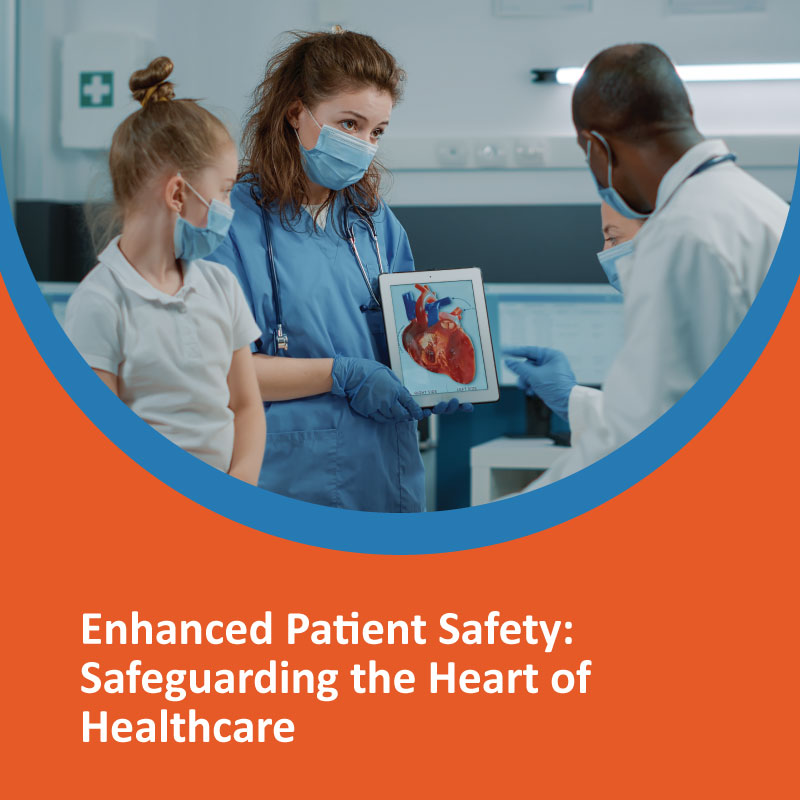Across industries, an organization must guarantee public safety, such as in medical billing, where the safety of patients is also essential. Patient safety is crucial in healthcare. It involves reducing risks and preventing mistakes, which helps ensure positive outcomes and improves experiences for patients and healthcare providers. With new technology constantly introduced into medical care, treatment is becoming more advanced and complicated. As a result, healthcare institutions around the world must work to address safety challenges effectively.
Communication failures, infections, and medical mistakes are some of the most notable risks to patient safety. These challenges pose a unique set of issues, including higher expenditure on healthcare services, reduced trust and satisfaction levels, and a decline in patients’ general health. The solution to these problems requires a shift towards proactive measures such as evidence-based practice, new technology development, and a commitment to improving openness and willingness to deal with problems.
The Importance of Patient Safety
Patient safety is crucial in healthcare. It prevents mistakes and infections and improves care. Mistakes can lead to more extended hospital stays, higher costs, and even death.
Patient safety ensures:
- Accurate medication
- Proper hygiene
- Close patient monitoring
It helps patients get better, not worse.
Key Strategies for Enhancing Patient Safety
1. Implementation of Evidence-Based Practices
Healthcare facilities should adopt research-backed protocols to minimize risks. This includes standardized surgical checklists, infection control measures, and proper medication management.
2. Use of Technology in Healthcare
Innovations like EHRs and automated medication systems reduce errors. AI-driven diagnostics also improve patient outcomes. Machines help ease work and provide better services. They improve healthcare and patient care.
3. Improved Communication and Teamwork
Communication between healthcare professionals is essential for patient safety. Working in a team also affects patient safety. A step-by-step procedure ensures the work is done efficiently, and a culture of open dialogue can prevent misunderstandings and errors.
4. Engage the Patient through Education
First of all, tell your patients about your terms of conditions, ways of treatment, and safety protocols to empower them to participate actively in their care. When patients are informed, they will cooperate with healthcare providers.
5. Regular Training and Simulation Exercises
Healthcare providers must continually update their skills. This ensures they can provide the best care possible and respond effectively in emergencies, ultimately saving lives and improving patient outcomes.
6. Establishing a Culture of Safety
Safety should be on priority in hospitals. Staff should feel safe reporting mistakes without fear of punishment. This helps hospitals learn from errors and make changes to keep patients safer.
Challenges in Achieving Patient Safety
Progress is being made, but there are challenges. Limited resources and staff shortages slow down safety efforts, and resistance to change is also a problem. Additionally, patient safety depends on access to healthcare services and other social and economic factors. Solving these issues requires determination from healthcare, politicians, and experts to consistently improve safety protocols.
Conclusion
The safety of patients is paramount in healthcare services. It means that when patients feel safe in the company of healthcare providers, they will return. Use the latest technology in healthcare services to ensure the safety of patients. And also use good communication to attract patient attention. Working in teamwork also ensures the safety of patients. When you make your patients aware of your guidelines and policies of working, they will adopt them according to your rules. It also helps in the safety of patients. Last, we can say that patient safety is the heart of healthcare.
Frequently Asked Questions (FAQs)
Q1. Why is patient safety important?
Patient safety reduces medical errors, prevents harm, and improves healthcare outcomes. It also enhances patient trust in the healthcare system.
Q2. How can hospitals improve patient safety?
Hospitals can improve patient safety by using proven protocols, better communication, and technology. A culture of transparency and learning is key.
Q3. What role does technology play in patient safety?
Technology, such as electronic health records and AI-driven diagnostics, helps reduce human errors, improve efficiency, and ensure accurate treatment and medication management.
Q4. How can patients contribute to their safety?
Patients can help by learning about their condition. They should follow treatment plans. Asking questions is also essential. Sharing concerns with their healthcare team helps too.



